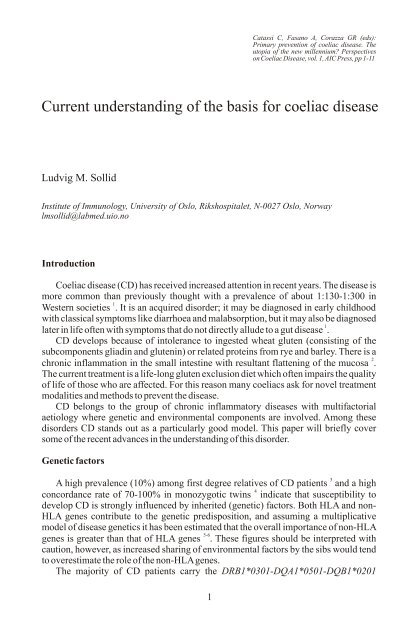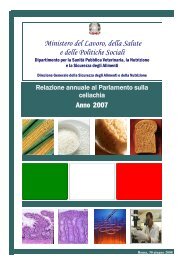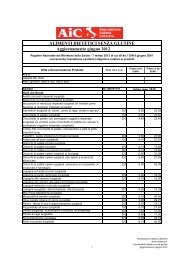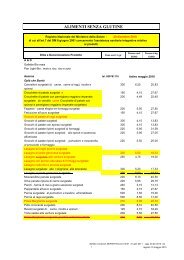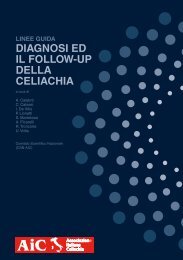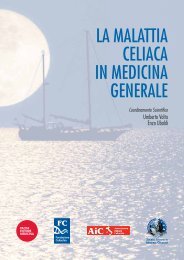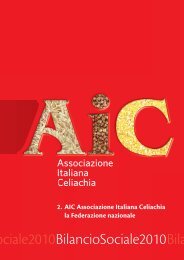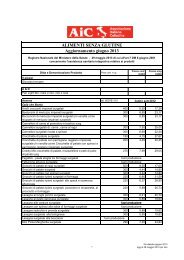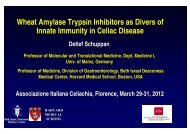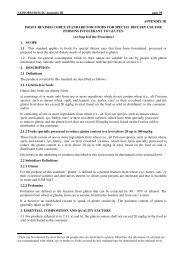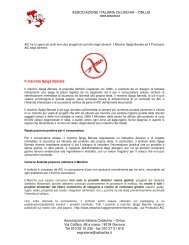primary prevention of coeliac disease - Associazione Italiana ...
primary prevention of coeliac disease - Associazione Italiana ...
primary prevention of coeliac disease - Associazione Italiana ...
Create successful ePaper yourself
Turn your PDF publications into a flip-book with our unique Google optimized e-Paper software.
Catassi C, Fasano A, Corazza GR (eds):<br />
Primary <strong>prevention</strong> <strong>of</strong> <strong>coeliac</strong> <strong>disease</strong>. The<br />
utopia <strong>of</strong> the new millennium? Perspectives<br />
on Coeliac Disease, vol. 1, AIC Press, pp 1-11<br />
Current understanding <strong>of</strong> the basis for <strong>coeliac</strong> <strong>disease</strong><br />
Ludvig M. Sollid<br />
Institute <strong>of</strong> Immunology, University <strong>of</strong> Oslo, Rikshospitalet, N-0027 Oslo, Norway<br />
lmsollid@labmed.uio.no<br />
Introduction<br />
Coeliac <strong>disease</strong> (CD) has received increased attention in recent years. The <strong>disease</strong> is<br />
more common than previously thought with a prevalence <strong>of</strong> about 1:130-1:300 in<br />
1<br />
Western societies . It is an acquired disorder; it may be diagnosed in early childhood<br />
with classical symptoms like diarrhoea and malabsorption, but it may also be diagnosed<br />
1<br />
later in life <strong>of</strong>ten with symptoms that do not directly allude to a gut <strong>disease</strong> .<br />
CD develops because <strong>of</strong> intolerance to ingested wheat gluten (consisting <strong>of</strong> the<br />
subcomponents gliadin and glutenin) or related proteins from rye and barley. There is a<br />
2<br />
chronic inflammation in the small intestine with resultant flattening <strong>of</strong> the mucosa .<br />
The current treatment is a life-long gluten exclusion diet which <strong>of</strong>ten impairs the quality<br />
<strong>of</strong> life <strong>of</strong> those who are affected. For this reason many <strong>coeliac</strong>s ask for novel treatment<br />
modalities and methods to prevent the <strong>disease</strong>.<br />
CD belongs to the group <strong>of</strong> chronic inflammatory <strong>disease</strong>s with multifactorial<br />
aetiology where genetic and environmental components are involved. Among these<br />
disorders CD stands out as a particularly good model. This paper will briefly cover<br />
some <strong>of</strong> the recent advances in the understanding <strong>of</strong> this disorder.<br />
Genetic factors<br />
3<br />
A high prevalence (10%) among first degree relatives <strong>of</strong> CD patients and a high<br />
4<br />
concordance rate <strong>of</strong> 70-100% in monozygotic twins indicate that susceptibility to<br />
develop CD is strongly influenced by inherited (genetic) factors. Both HLA and non-<br />
HLA genes contribute to the genetic predisposition, and assuming a multiplicative<br />
model <strong>of</strong> <strong>disease</strong> genetics it has been estimated that the overall importance <strong>of</strong> non-HLA<br />
5-6<br />
genes is greater than that <strong>of</strong> HLA genes . These figures should be interpreted with<br />
caution, however, as increased sharing <strong>of</strong> environmental factors by the sibs would tend<br />
to overestimate the role <strong>of</strong> the non-HLA genes.<br />
The majority <strong>of</strong> CD patients carry the DRB1*0301-DQA1*0501-DQB1*0201<br />
1


